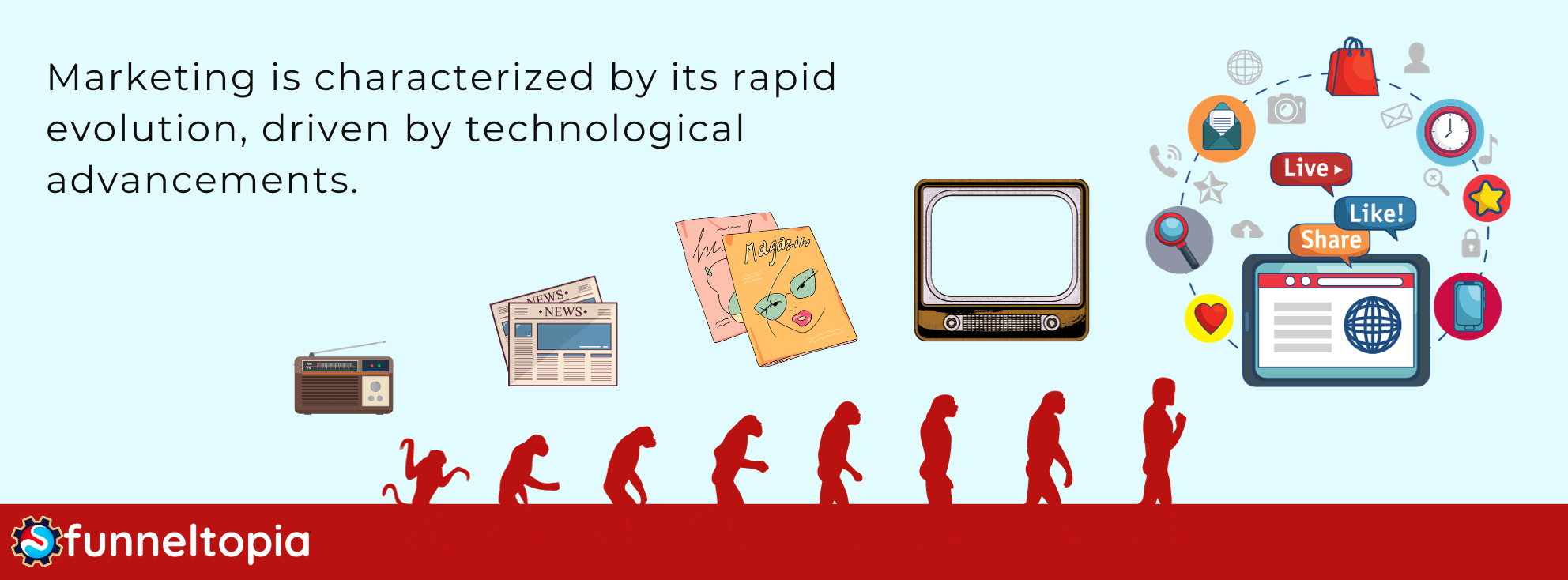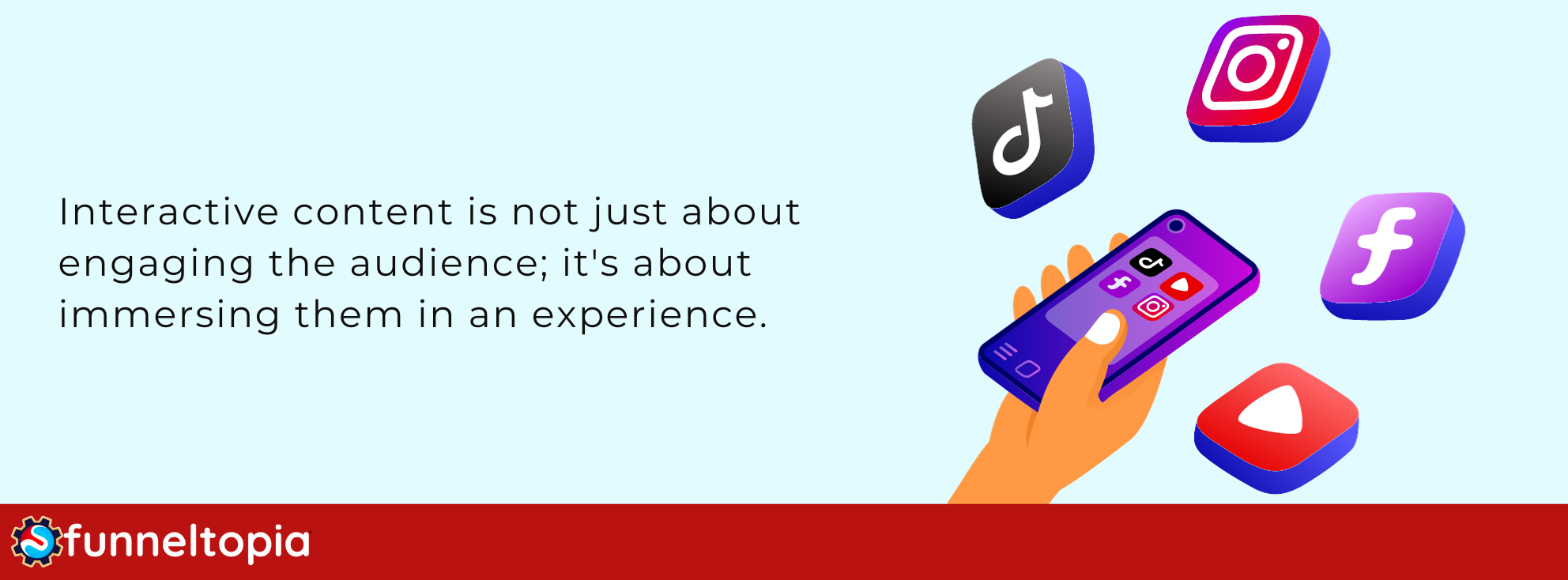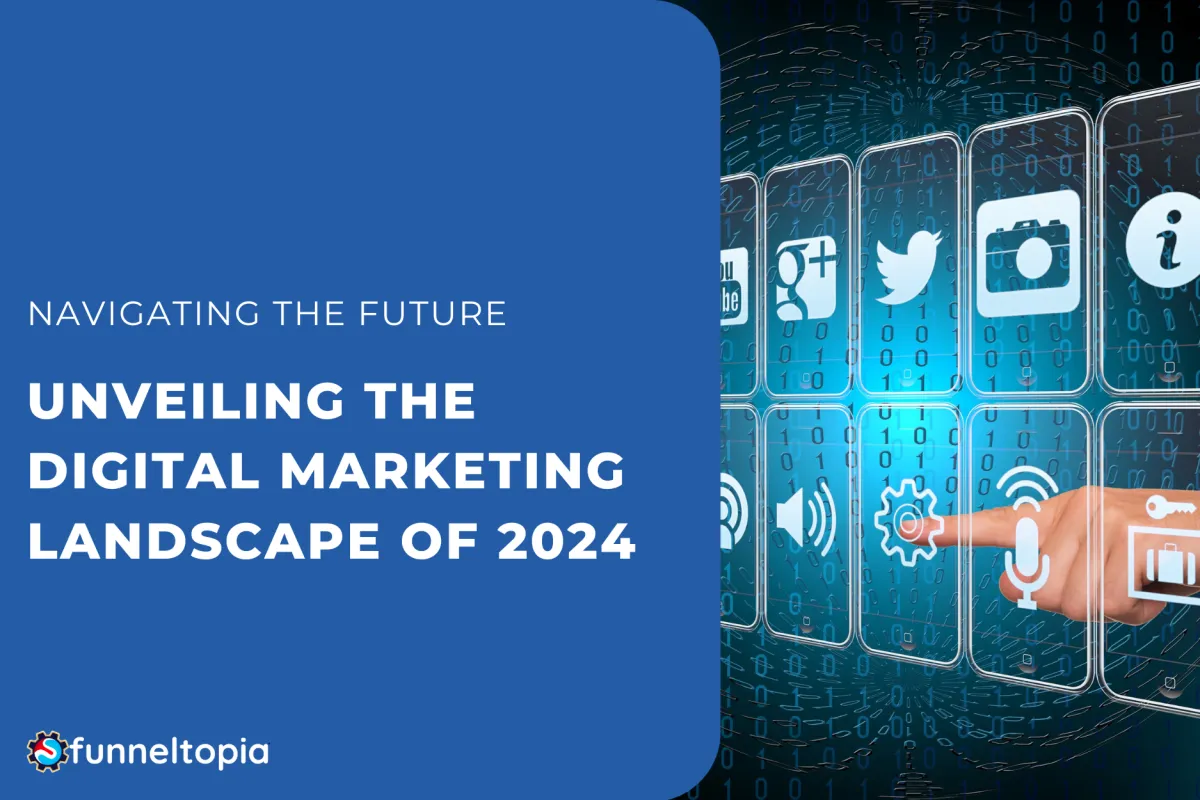Introduction
As the digital age continues to evolve, so does the world of marketing. The digital marketing landscape, once dominated by simple banner ads and email campaigns, has transformed into a complex ecosystem of interconnected strategies, platforms, and technologies.
The pace of change in the digital marketing realm is nothing short of astonishing, and this constant state of flux is both a challenge and an opportunity. It's a challenge because what worked yesterday might not work tomorrow. But it's also an opportunity because those who can anticipate and adapt to these changes can position themselves at the forefront of their industries.
Understanding the future of digital marketing is not just about predicting the next big platform or the latest AI tool. It's about recognizing the broader trends that shape how consumers interact with brands, how data is used and analyzed, and how businesses can deliver value in an increasingly digital-first world.
So, buckle up and let's delve into the future of digital marketing in 2024.
The pace of change in digital marketing
Digital marketing, by its very nature, is a dynamic field. The digital realm is characterized by its rapid evolution, driven by technological advancements, shifts in consumer behavior, and the ever-changing algorithms of major platforms.
A Decade of Transformation: If we were to rewind just a decade ago, the digital marketing landscape looked vastly different. Social media was still finding its footing, mobile marketing was in its infancy, and concepts like influencer marketing or chatbots were barely on the radar. Fast forward to today, and these elements are integral to many marketing strategies. This decade of transformation underscores the rapidity with which digital marketing evolves.
The Tech-Driven Acceleration: One of the primary drivers of this swift change is technological innovation. From the rise of augmented reality (AR) and virtual reality (VR) to the proliferation of 5G networks, technology continually reshapes how brands connect with their audiences. For instance, the introduction of AR filters on platforms like Snapchat and Instagram has opened up new avenues for brand engagement and storytelling.
Consumer Behavior and Expectations: As technology advances, so do consumer expectations. Today's consumers are more informed, more connected, and more discerning than ever before. They expect personalized experiences, instant gratification, and seamless interactions across all touchpoints. This shift in consumer behavior and expectations continually pushes marketers to innovate and adapt.
The Algorithmic Challenge: Platforms like Google, Facebook, and Instagram are central to digital marketing efforts. However, these platforms frequently update their algorithms, affecting visibility, reach, and engagement. Staying updated with these changes and adapting strategies accordingly is a constant challenge for marketers.

The importance of staying ahead
In this fast-paced environment, staying ahead is not just a competitive advantage; it's a matter of survival. Brands that fail to anticipate and adapt to the latest trends risk losing relevance, visibility, and engagement.
Proactive vs. Reactive Marketing: The difference between success and failure often boils down to whether a brand is proactive or reactive. Proactive brands invest in research, stay updated with the latest trends, and are quick to experiment with new strategies. In contrast, reactive brands often find themselves playing catch-up, implementing strategies that are already outdated.
Continuous Learning and Adaptation: The digital marketing landscape is not static. What works today might not work tomorrow. Hence, continuous learning, upskilling, and adaptation are essential. This involves attending industry conferences, participating in webinars, and staying updated with reputable marketing publications.
Leveraging Data and Insights: One of the biggest advantages of digital marketing is the abundance of data available. By leveraging this data, brands can gain insights into consumer behavior, preferences, and pain points. This data-driven approach allows for more informed decision-making and strategy formulation.
Collaboration and Networking: No brand is an island. Collaborating with industry peers, partnering with influencers, and networking with experts can provide fresh perspectives, insights, and opportunities. It's a way to tap into collective knowledge and stay ahead of the curve.
The Rise of AI and Machine Learning
Artificial Intelligence (AI) and Machine Learning (ML) are no longer just buzzwords in the tech industry. They have permeated various sectors, and digital marketing is no exception. As we approach 2024, the influence of AI and ML on marketing strategies is set to grow exponentially, offering unprecedented opportunities for personalization, efficiency, and innovation.
Predictive Analytics
Predictive analytics, powered by AI and ML, is transforming the way marketers approach data. By analyzing past data and identifying patterns, predictive analytics can forecast future trends, behaviors, and outcomes.
Anticipating Consumer Behavior: With predictive analytics, brands can anticipate what a consumer is likely to do next. This could mean predicting which products a consumer might be interested in, when they might make a purchase, or even when they might churn. Such insights enable brands to tailor their strategies proactively.
Optimizing Marketing Spend: By predicting which marketing strategies are likely to yield the best results, brands can allocate their budgets more effectively. This ensures a higher ROI and reduces wasteful spending.
Enhancing Customer Experience: Predictive analytics can also be used to enhance the customer journey. For instance, by predicting when a customer might face an issue, brands can proactively offer solutions, leading to improved customer satisfaction.
Personalized Marketing
The era of one-size-fits-all marketing is long gone. In its place, personalized marketing, driven by AI and ML, is taking center stage.
Dynamic Content Customization: AI algorithms can analyze a user's behavior, preferences, and past interactions to serve dynamic content that resonates with them. This could be in the form of personalized product recommendations, tailored email campaigns, or even customized website experiences.
Chatbots and Virtual Assistants: AI-powered chatbots and virtual assistants are revolutionizing customer interactions. They can provide instant responses, guide users through a website, and even assist in the purchasing process, all while offering a personalized experience.
Segmentation and Targeting: AI and ML enable brands to segment their audience with unparalleled precision. By analyzing vast amounts of data, brands can identify micro-segments and tailor their marketing strategies to cater to each segment's unique needs and preferences.

The potential of AI and ML in digital marketing is vast. However, it's essential for brands to approach these technologies ethically, ensuring transparency and prioritizing user privacy. As we move towards 2024, the brands that can harness the power of AI and ML while maintaining trust will be the ones that truly stand out.
Evolving Social Media Platforms
Social media has been a game-changer for digital marketing, offering brands a direct line to their audiences. However, as we approach 2024, it's evident that the world of social media is in a state of flux. New platforms are emerging, user behaviors are shifting, and the content landscape is undergoing significant transformation.
Emerging Platforms
While giants like Facebook, Instagram, and Twitter continue to hold sway, several new platforms are making their mark, capturing the attention of specific demographics and offering unique engagement opportunities.
TikTok: Originally launched in 2016, TikTok has seen meteoric growth, especially among Gen Z. Its short-form video content format has not only entertained but also paved the way for innovative marketing campaigns. Brands are leveraging challenges, duets, and influencer partnerships to engage with the TikTok audience.
Clubhouse: An audio-only social platform, Clubhouse offers a space for real-time conversations, discussions, and networking. Brands are tapping into this platform to host discussions, engage with industry experts, and build a community.
Other Niche Platforms: Apart from the big players, niche platforms catering to specific interests and communities are also gaining traction. Whether it's platforms for artists, gamers, or fitness enthusiasts, these niche spaces offer brands unique avenues to connect with dedicated audiences.
Changes in Content Consumption Patterns
The way users consume content on social media is evolving, driven by technological advancements and shifting user preferences.
Short-Form vs. Long-Form: While platforms like TikTok and Instagram Reels popularize short-form content, there's a parallel rise in long-form content on platforms like YouTube and IGTV. Brands need to strike a balance, crafting content that caters to both quick consumption and deep engagement.
Interactive Content: Polls, quizzes, AR filters, and interactive stories are becoming staples on social media. This type of content not only boosts engagement but also offers brands valuable insights into user preferences and behaviors.
Authenticity Over Polish: Highly curated and polished content is giving way to raw, authentic, and real-time content. Users are seeking genuine connections, and brands that can showcase their human side are resonating more with audiences.
The Challenge of Evolving Algorithms
Social media platforms continually tweak their algorithms, affecting content visibility and engagement. For brands, this means staying updated with these changes and adapting their strategies to ensure their content reaches its intended audience.
SEO Innovations
Search Engine Optimization (SEO) has been a cornerstone of digital marketing for years. However, like all aspects of the digital realm, SEO is in a state of constant evolution. As we approach 2024, several innovations are set to redefine the SEO landscape, demanding attention and adaptation from marketers.
Core Web Vitals
Introduced by Google, Core Web Vitals are a set of metrics designed to measure the user experience on a website. These metrics focus on three key aspects: loading performance, interactivity, and visual stability.
Largest Contentful Paint (LCP): This metric gauges loading performance, specifically how quickly the main content of a page loads. A good LCP score ensures users can engage with a page promptly.
First Input Delay (FID): FID measures interactivity, specifically the time it takes for a page to become interactive after a user interacts with it, like clicking a button.
Cumulative Layout Shift (CLS): CLS assesses visual stability, ensuring that elements on a page don't shift unexpectedly, leading to a seamless user experience.
With Google incorporating Core Web Vitals into its ranking criteria, it's imperative for brands to optimize their websites accordingly.
Voice Search
The proliferation of smart speakers and voice-activated devices like Amazon's Alexa, Google Assistant, and Apple's Siri has led to a surge in voice searches.
Natural Language Processing: Voice searches are typically more conversational than typed queries. This demands content that's optimized for natural language, answering questions directly and contextually.
Local SEO: Many voice searches are local in nature, such as "Where's the nearest coffee shop?" Brands need to ensure their local SEO is on point, with updated business listings and location-specific content.
Structured Data: To cater to voice search, websites should utilize structured data, ensuring that search engines can easily understand and present their content in voice search results.
The Rise of Video in SEO
Video content is no longer just a nice-to-have; it's a must-have. With platforms like YouTube becoming search engines in their own right, video SEO is gaining prominence.
Optimized Video Content: Just like textual content, videos need to be optimized for search. This includes relevant titles, descriptions, tags, and even transcriptions.
Engaging Thumbnails: A compelling thumbnail can significantly boost video click-through rates. Brands should invest in creating thumbnails that capture attention and convey the essence of the video.
Diversified Content Strategy: It's essential to diversify video content, catering to different stages of the user journey – from awareness and consideration to decision and advocacy.
Content Marketing Trends
Content has always been king in the digital marketing realm, but as we approach 2024, the nature and form of content are undergoing significant shifts. Brands are exploring new formats, platforms, and strategies to engage their audiences, tell their stories, and drive conversions.
Interactive Content
Interactive content is not just about engaging the audience; it's about immersing them in an experience. This form of content demands active participation, offering users a more dynamic and personalized interaction.
Quizzes and Polls: These are simple yet effective tools to engage users. They not only entertain but can also provide brands with valuable insights into user preferences and behaviors.
Interactive Infographics: Traditional infographics present data in a visual format. By adding interactive elements, brands can make data exploration more engaging, allowing users to dive deeper into topics of interest.
Virtual and Augmented Reality: VR and AR offer immersive experiences, transporting users to virtual worlds or enhancing the real world with digital elements. From virtual try-ons in fashion to AR-enhanced product demos, the possibilities are vast.

Video Marketing
Video content continues to dominate the digital landscape, driven by its ability to convey messages quickly, engage emotionally, and cater to mobile consumption patterns.
Live Streaming: Platforms like Facebook Live, Instagram Live, and Twitch offer real-time video streaming capabilities. Brands are leveraging live streaming for product launches, behind-the-scenes looks, Q&A sessions, and more.
Short-Form vs. Long-Form: While platforms like TikTok popularize short-form video content, there's a parallel rise in long-form content on platforms like YouTube. Brands need to diversify their video content strategy, catering to both quick snippets and in-depth explorations.
360-degree Videos: Offering a panoramic view, 360-degree videos provide users with a more immersive experience, allowing them to explore every angle of a scene. This format is especially popular in travel, real estate, and event marketing.
The Power of Storytelling
In a world inundated with content, storytelling stands out as a powerful tool to connect with audiences on a deeper, emotional level.
Brand Narratives: More than just selling products or services, brands are crafting narratives that resonate with their audience's values, aspirations, and challenges.
User-Generated Content: Authentic stories from real users can be more compelling than polished brand content. Encouraging and showcasing user-generated content builds community and trust.
Diverse and Inclusive Content: As societal awareness grows, brands are prioritizing diversity and inclusion in their content, ensuring that all voices are heard and represented.
In essence, content marketing in 2024 is about more than just creating content; it's about crafting experiences. It's about understanding the audience, leveraging the right formats and platforms, and telling stories that resonate and inspire.
Conclusion
In the ever-evolving world of digital marketing, understanding and adapting to the future is crucial. As we've explored the potential landscape of 2024, it's evident that innovation, adaptability, and genuine connection will be at the heart of successful strategies. For those looking to not only navigate but also lead in this transformative era, insights from industry leaders can be invaluable. Just as Funnel Magazine offers a deep dive into the strategies of millionaires and billionaires who've scaled their businesses using funnels, embracing the lessons and foresights from such experts can be the key to unlocking unparalleled growth and success in the digital realm.
Actionable Insights
Invest in AI and ML Tools: Harness the power of predictive analytics, personalized marketing, and data-driven insights to enhance your marketing strategies.
Diversify Content Strategies: From interactive content to video marketing, explore diverse content formats to engage and captivate your audience.
Stay Updated with SEO Innovations: With the evolving nature of search algorithms, ensure that your SEO strategies prioritize user experience and adapt to the latest updates.
Engage Authentically on Social Media: Beyond mere promotion, use social media platforms to engage, listen, and build genuine relationships with your audience.
In wrapping up, the journey towards 2024's digital marketing landscape is one of exploration, innovation, and connection. By understanding the emerging trends, anticipating the shifts, and focusing on delivering genuine value, businesses can not only navigate the future but also shape it.







